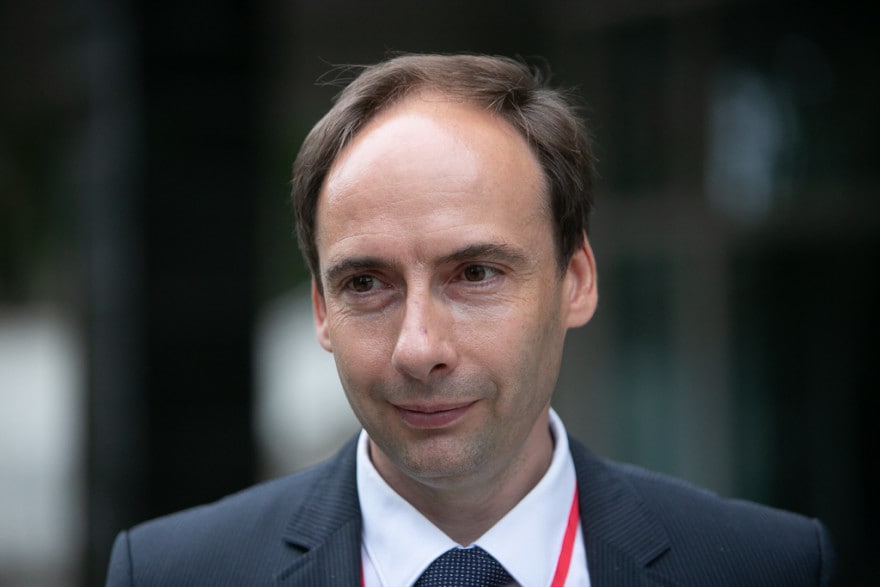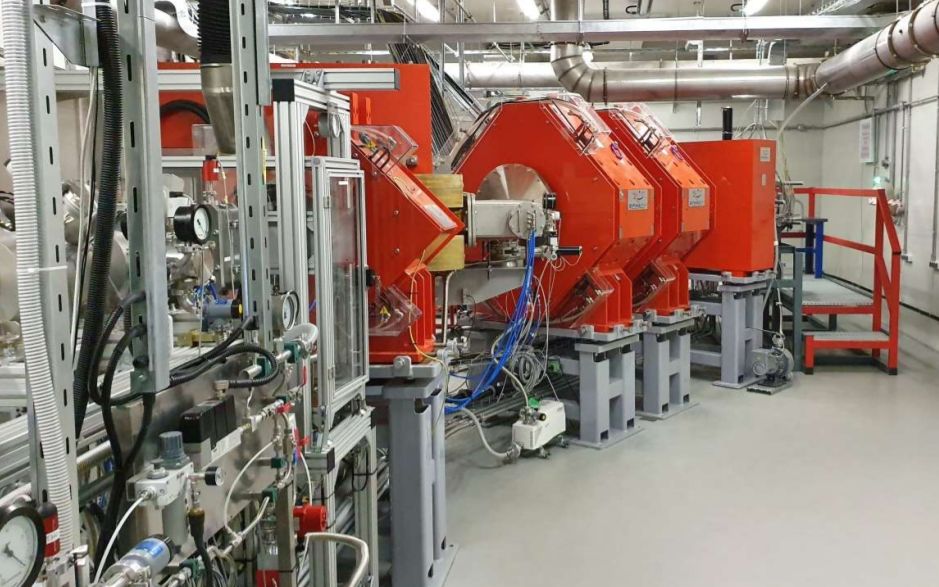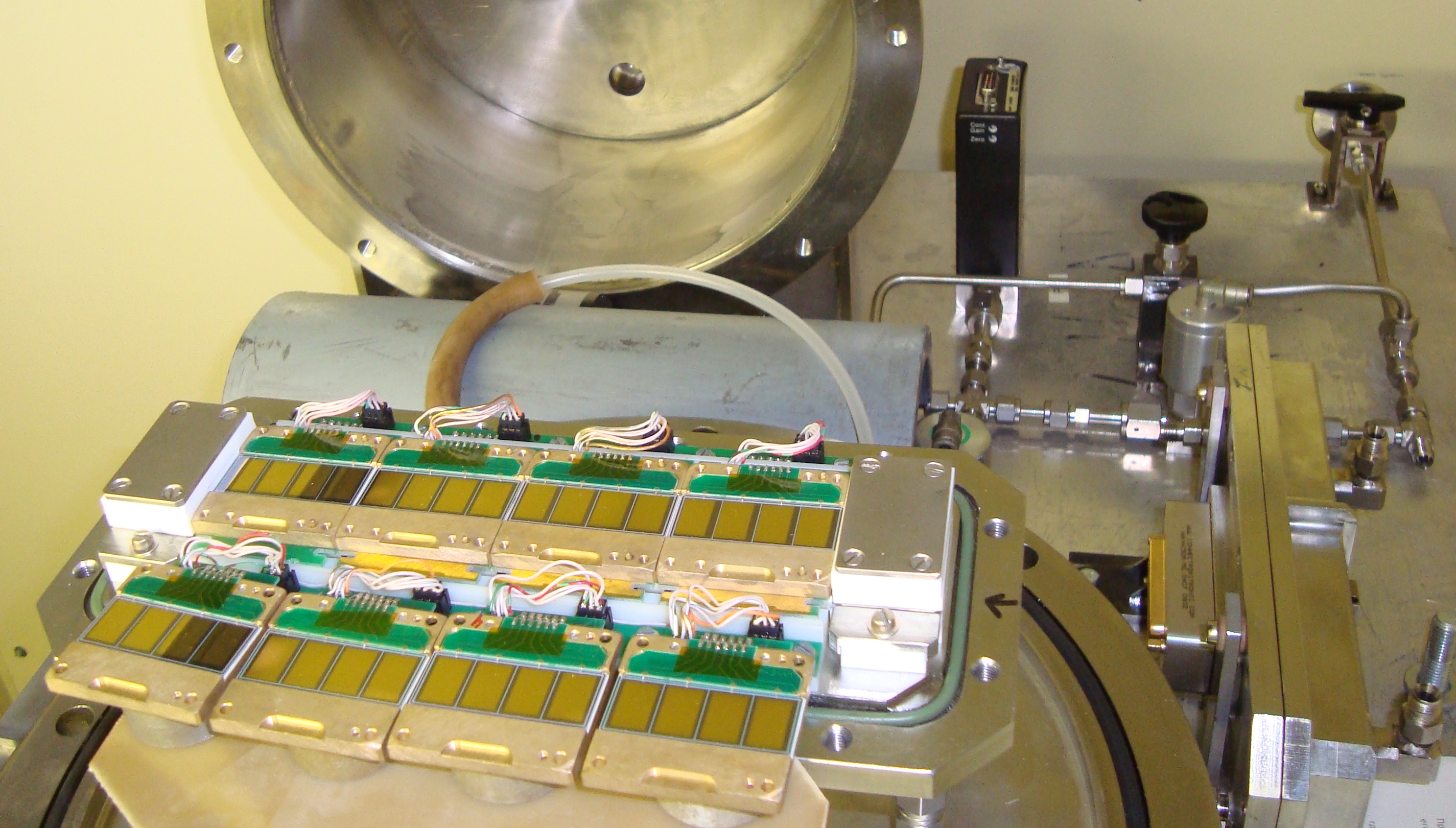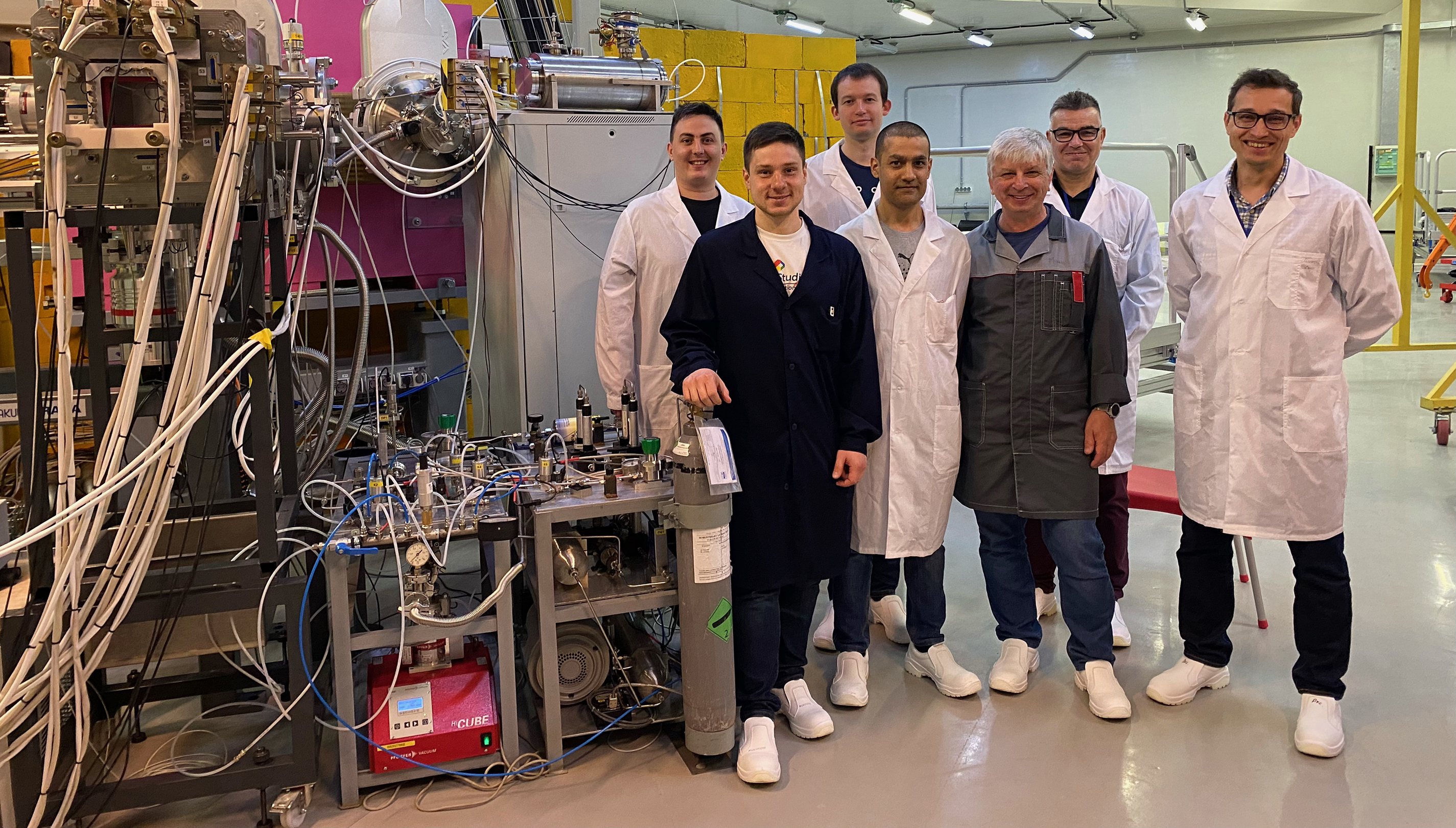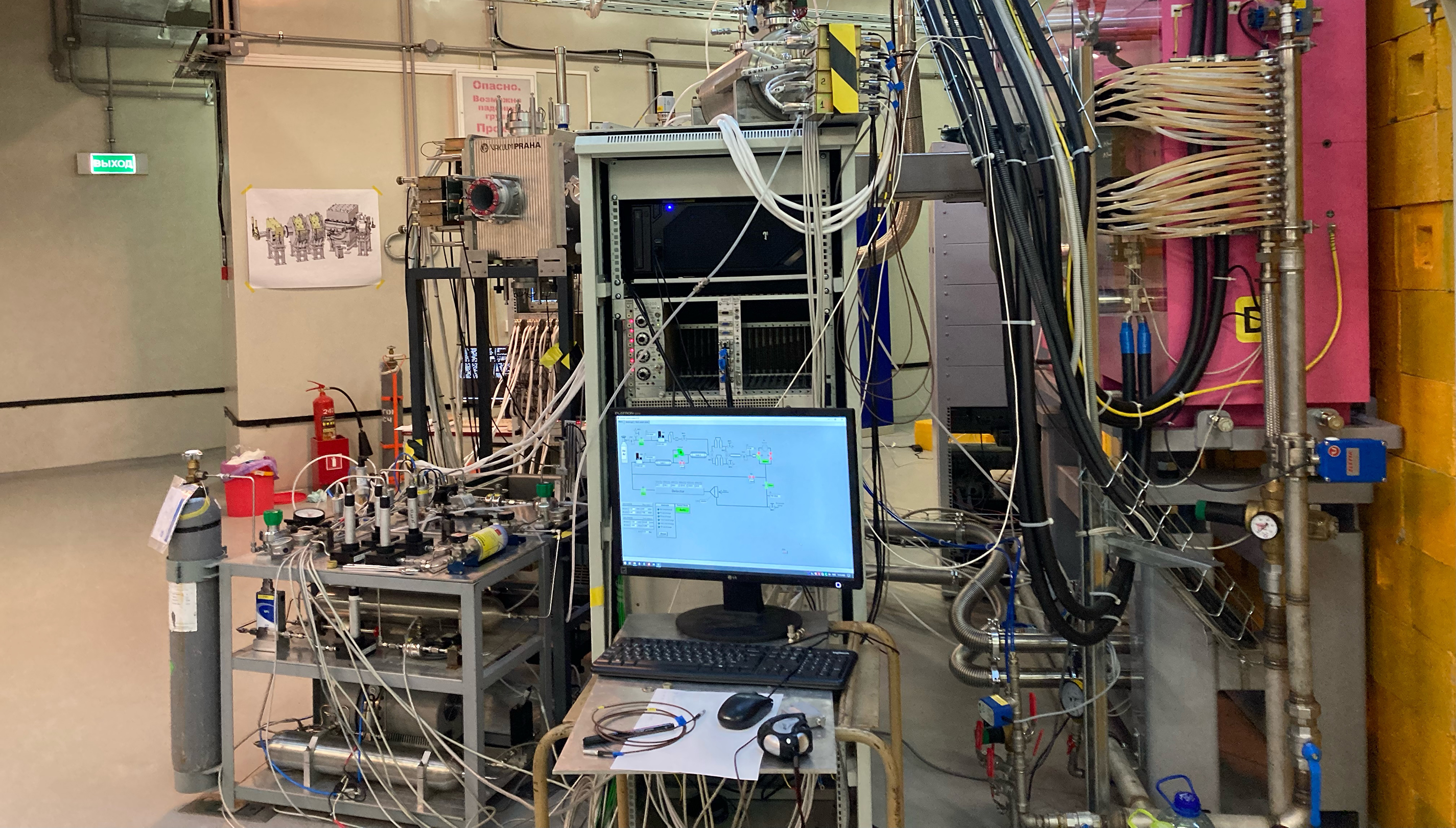Two experiments carried out at Superheavy Element Factory
News, 10 August 2022
This summer, two large experiments were conducted at the Superheavy Element Factory of the Flerov Laboratory of Nuclear Reactions JINR. One of them resulted in a new synthesised isotope of chemical element 110. The result of the other experiment was the successful preparation for the study of the chemical properties of elements 112 and 114. FLNR Scientific Secretary, Doctor of Physics and Mathematics Alexander Karpov commented on state of the art at the Factory.
After the May holidays, an experiment to obtain a new isotope of element 110 darmstadtium (Ds) of the Periodic Table was launched and completed in mid-June. The research was carried out at the gas-filled separator of recoil nuclei DGFRS-II (Dubna Gas-Filled Recoil Separator), which was the first facility launched at the SHE Factory and at which all the previous experiments were performed. The DGFRS-II separator launched in 2020 is designed mainly for the synthesis and study of radioactive decay properties of superheavy elements.
“In this experiment, we have tried for the first time to synthesise isotopes of element 110 in the reaction of calcium-48 and thorium-232. Darmstadtium is not a new element, but researchers have not previously tried to synthesise these nuclei in reactions with calcium,” Alexander Karpov said. He added that the theory predicted a local minimum of stability for element 110, i.e. both lighter and heavier elements (up to 115) should be obtained with large cross-sections (possibility of formation) and “live” long enough. Starting from element 116, the theory again predicts a decline in stability.
“Our interest has been to “feel the bottom” of stability and thereby test the theory. The same theory applies to predictions of the properties of elements 119 and 120. In this regard, it has been important to confirm the predictions thus to more reasonably conduct experiments to obtain element 120 this time,” the scientist explained.
The experiment took quite a long time – about a month. On its penultimate day, scientists finally managed to get an important result: one event of an absolutely new isotope formation of 110 element with a mass number of 276. “A very small cross–section of formation, very low survival, and stability are basically what we have expected from the theory. Besides, in principle, a new isotope of element 110 was obtained. In addition to the fact that we have managed to measure such a small cross-section, which is important in itself, and it was simply impossible before the SHE Factory, we have managed to obtain a new isotope of element 110,” Alexander Karpov commented. He noted that this was the third new isotope of chemical elements discovered at the SHE Factory in a year and a half of its operation.
The second summer experiment at the SHE Factory was conducted as the preparation for a scientific experiment planned for autumn 2022 to study the chemical properties of elements 112 (copernicium, Cn) and 114 (flerovium, Fl). The study of the “chemistry” of 112 and 114 elements will be included in the FLNR annual report on the mega-grant of the Ministry of Science and Higher Education of Russia.
Testing lasted for two weeks in the first half of June and was carried out on mercury atoms. According to Alexander Karpov, this experiment presents certain difficulties, since a part of the research team that prepared the equipment and was supposed to participate was in Switzerland and could not come to Dubna. Therefore, FLNR scientists and engineers had additional responsibilities for the preparation of the experiment itself and the necessary equipment.
By mid–June, a trial experiment was carried out at the Factory’s second separator, DGFRS-III, which had just been put into operation. The separator has two outlets. One is for experiments on the study of nuclear physical properties and the structure of superheavy nuclei. The second outlet is designed to study the chemical properties of superheavy atoms.
At the end of 2021, the installation and commissioning of DGFRS-III were completed and the first test experiments with a 48Ca ion beam were carried out. In February 2022, the separator itself was ready for operation, however preparatory work related to its detecting equipment was still underway until May, including on a recoil nuclei collection chamber, an automated gas transportation system, and a chromatography detector. Other technical issues were being resolved as well.
“We have performed very important test experiments at the separator. The results of slowing the atoms of heavy elements in the gas were obtained. A gas-filled chamber is connected to the separator. In it, flying atoms should stop, become neutral, tearing electrons from surrounding gas atoms, and then neutral atoms should be transported to detectors through a thin capillary tube. The whole system has been assembled, and now we are determining its optimal parameters, i.e. the mixture of which gases to use, in what ratio should this mixture be, what depth should the chamber be. The parameters of the chamber should be such that atoms do not “drive” into its wall, but an excessive volume is also not beneficial to us. That is, it is necessary to give it a minimum working volume,” Alexander Karpov said.
Now, the Factory, like all the FLNR accelerators, has been shut down for summer maintenance work and will be relaunched in September. The results of the experiments are being processed in the Laboratory. Preparations for the experiment on the chemistry of elements 112 and 114 will continue in September. Alexander Karpov highlighted that in the autumn experimental cycle, the main emphasis would be placed on the preparation and conduct of experiments to study the chemical properties of superheavy elements and carry out the planned experiment as efficiently as possible.
